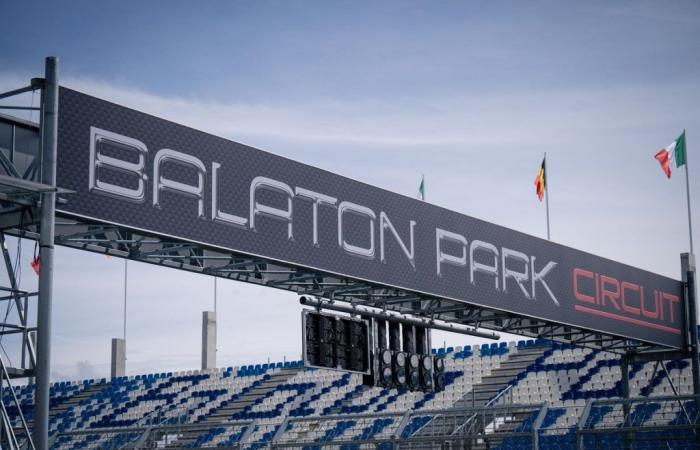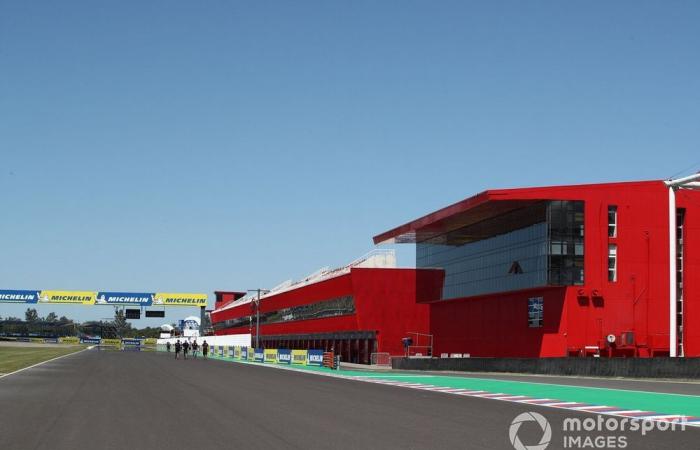Several Grands Prix will return to the MotoGP calendar in 2025 thanks to new contracts signed by the circuits of Brno, in the Czech Republic, and Balaton Park, in Hungary. Both are, however, subject to a work obligation so that the holding of these races is guaranteed.
For the Czech event, whose attendance made it one of the most notable events of the season in the past, it was the quality of the bitumen which was at the top of the requests made by Dorna so that it could find his place. It disappeared from the calendar in 2021 amid disagreement with the owner at the time and difficulties precipitated by Covid.
“It hasn’t been resurfaced at the moment. That’s part of the conditions for us to go back. There are also, obviously, other things they need to improve and we agree on all of that,” assures Carlos Ezpeleta, sporting director of MotoGP, speaking for the official website of Brno where the championship is due to run next July.
The case of Balaton Park is somewhat different, the circuit being very recent. But, designed above all for motor racing, it does not exactly correspond to the safety criteria of MotoGP, which has therefore made certain work intended to adapt the track so that it meets the standards set by the FIM a priority.
“The circuit was built quite recently, it will undergo quite significant changes, which we agree on,” indicate Carlos Ezpeleta. “The circuit has a fairly atypical layout. It has a lot of fast sections which will be modified for MotoGP and this will then give very slow and technical sections which the riders will appreciate, I think.
Presentation of the Balaton Park circuit in September.
Photo de: Balaton Park
The work mentioned concerns in particular turn 7, which is now fast, which must be transformed into two turns with a smaller radius and benefiting from greater clearance. Further on, a chicane must also be created to cut the return straight at approximately the first third of its length. Here, the advantage will be twofold: speeds will be reduced and the new braking zone will offer overtaking possibilities. The change follows in the same vein as the chicane created at the Red Bull Ring for MotoGP after the scary 2020 crash that saw two crashed motorcycles race across the track at full speed and nearly hit other riders.
Finally, the last portion will also be remodeled to improve safety. The chicane currently forming turns 12 and 13 will be largely retained, but the route will take a detour on the inside in order to allow a direct relaunch towards the main straight, so that the exit angle of the last corner will not see drivers facing a wall.
Despite the work, peaks of up to 300 km/h are expected on the start/finish straight and the total length of the track will only change by around thirty meters since the added turns will cover the distance lost in the last sector .
“MotoGP is very complicated in terms of circuit design,” explained Carlos Ezpeleta during the presentation of the project at Balaton Park. “We are very specific as to what clearance areas are needed and that is of course, I wouldn’t say a limitation, but a factor as to where we can run.”
“The speed levels in MotoGP are obviously different to everything else. We hold the maximum speed for every circuit we race on. In fact, with our progress in safety every year, this means we have to have safety zones. clearances greater than in any other discipline, but I don’t think it’s something that should compromise the design of the circuit.”
The work should be completed around March, five months before the Grand Prix. And it should be noted that the entry of Balaton Park into the MotoGP calendar is done in conjunction with its arrival in WorldSBK, which must go there one month before the Grand Prix, at the end of July 2025. The same process had was followed for the last circuit to join the calendar, that of Mandalika, where the Superbike world championship had run three months before the official MotoGP test there and four months before the Grand Prix.
The Termas de Río Hondo circuit is also due to return in 2025.
Photo de: Gold and Goose / Motorsport Images
Other new events to come
Concerning the rest of the 2025 MotoGP calendar, Carlos Ezpeleta also judges that the situation in Argentina seems “positive”a few months after the cancellation of the Grand Prix pushed by the political and financial situation on site. Termas de Río Hondo must therefore return next March, within the framework of the existing contract.
The program is therefore enriched with the return of two circuits already known to MotoGP teams and the arrival of the new track designed in Hungary. But what will happen in the future? “The clear change will come from India, when it is included in the 2026 calendar,” replies the sports director of Dorna. “Afterwards, a certain number of countries showed their interest. South Africa, [des pays] in Southeast Asia, the Middle East, the United States… There are very positive prospects and projects.”
“These things take a long time because the projects are huge, the scale is very large, normally there are a lot of parties involved. It’s really important for us to work on delivering these 22 events for the year next year and then it will remain a balance between our traditional destinations in Europe and the growth of the championship towards new horizons, in Europe this year and overseas in the future.”
With Tom Jeffries







